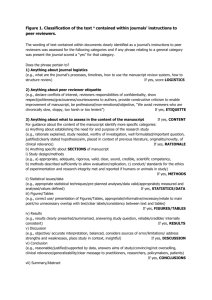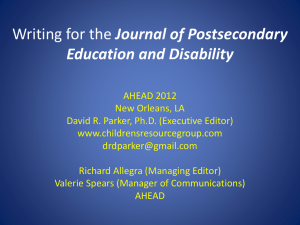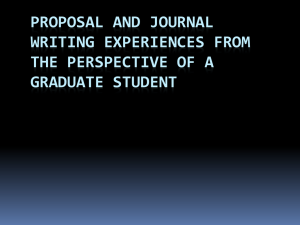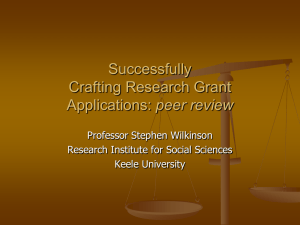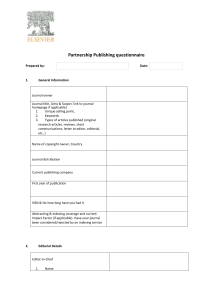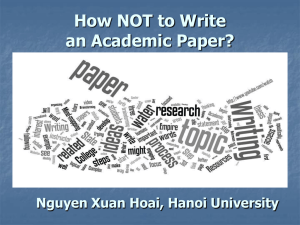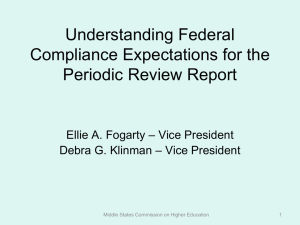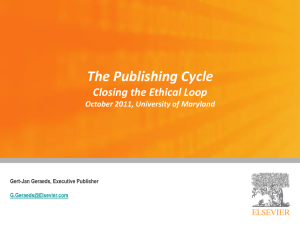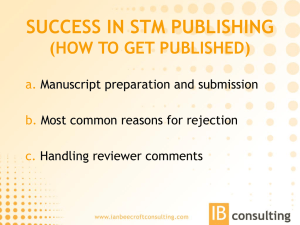Ph.D. Program in Accounting - Financial Accounting Standards
advertisement
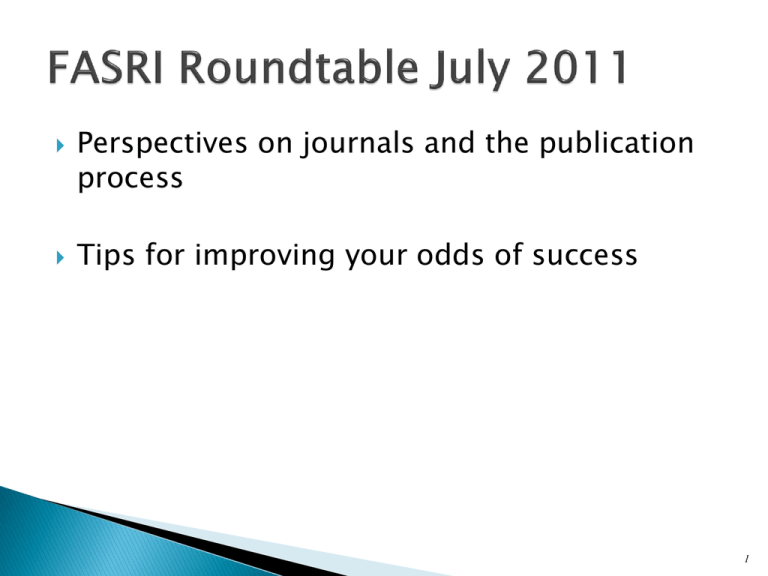
Perspectives on journals and the publication process Tips for improving your odds of success 1 • • SENIOR EDITOR: John Harry Evans III EDITORS: • Michael L. Ettredge, University of Kansas David A. Guenther, University of Oregon Leslie D. Hodder, Indiana University Amy P. Hutton, Boston College Bin Ke, The Pennsylvania State University/Nanyang Technological University Lisa Koonce, The University of Texas at Austin Charles Lee, Stanford University Kenneth A. Merchant, University of Southern California Gregory S. Miller, University of Michigan Donald V. Moser, University of Pittsburgh Morton Pincus, University of California, Irvine Vernon J. Richardson, University of Arkansas Phillip C. Stocken, Dartmouth College Beverly R. Walther, Northwestern University 2 TAR Editorial Assistant, Stacy Hoffman assigns a manuscript number Lesson 1: Full Disclosure is the professional approach. - Revision of manuscript previously rejected by TAR? 3 With help of two doctoral students, Stacy and I search for two “best reviewers” ◦ Best reviewers are knowledgeable, objective and motivated ◦ TAR article titles and keywords; Editorial Board keyword specializations;141 EB vitas; Social Sciences Citation Index; References cited “Acknowledgments” not used 4 •First 4-5 pages critical •Editor reads this part initially •Three key parts: •Research question? •Why important? •How does study address the question? 5 Editors know the players suggest alternative reviewers Good reviewers are a very scarce resource 6 Blind copy of paper to two reviewers; reports requested in 30 days. Shortly after 30 days, send a reminder. Each reviewer returns Review Form and report. After 60+ days, make a decision? 7 •Reviewers are KEY! •For your manuscript •For TAR’s success •Editorial Board – 130 researchers •Ad hoc Reviewers – 453 more researchers 8 Five decision categories and templates: ◦ ◦ ◦ ◦ ◦ Conditional accept Revise and resubmit Uncertain Reject – Contribution Reject – Validity Editor tailors the letter to circumstances Help author understand: Basis for decision What to do next 9 Conditional acceptance < 1% Revise and resubmit 13% Uncertain 11% Reject – contribution 50% Reject - validity 26% 10 Contribution is frequently more important than execution! Authors often focus too much on execution and too little on contribution. 11 Odds of publication favor fresh, innovative areas over such well-established topics as: • Earnings management / abnormal accruals • Corporate governance and CEO compensation • Conservatism • Analyst forecasts, accrual anomalies, audit fees, etc. 12 Final “acceptance rate” is like accounting for inventory – “revise-and-resubmit” manuscripts are incomplete units ● TAR overall acceptance rate is approximately 12%-13% 13 Cruel fact - the vast majority must be rejected Success comes to those who learn from their mistakes and persevere – revise wisely! 14 Simplicity /clarity is key to communication Clear thinking and clear writing Achieving simplicity/clarity requires very hard work 15 Build a team and help each other communicate better Read work Use and critiques each other’s the TAR evaluation form ◦ Evaluate validity and contribution 16 Audit Financial Mgrl. Tax Other TOTAL Analytical 1% 1% 3% 5% 2% 3% 1% 1% 1% 0% 8% 9% Empirical Archival 11% 11% 45% 39% 6% 7% 5% 6% 8% 5% 74% 68% Experimental 5% 5% 3% 5% 3% 4% <1% <1% 1% 1% 13% 16% Other <1% 1% 1% 1% 2% 3% <1% 0% 1% 2% 5% 7% TOTAL 18% 19% 52% 49% 13% 16% 6% 7% 11% 8% 100% 100% 17 From Tuttle and Dillard (Accounting Horizons, Dec. 2007, Table 4): 38% financial accounting dissertations in 1995 70% financial accounting dissertations in 2005 18 “I’m very busy right now. I can’t possibly review the manuscript you sent me within a month.” “What’s holding up the decision on my manuscript?” 19 • “Review unto others as you would have them review unto you.” • That jerk who stupidly rejected your paper last week is most likely not the author of the paper you are reviewing. 20
